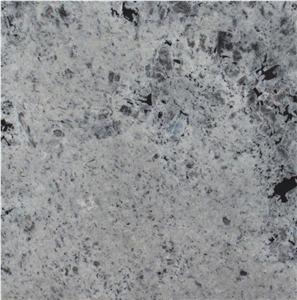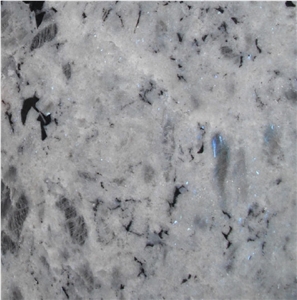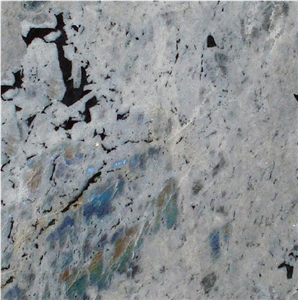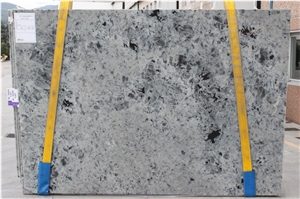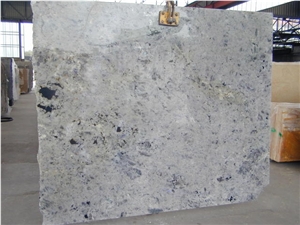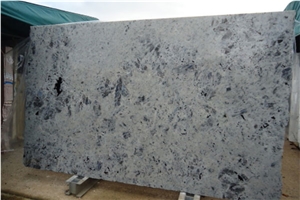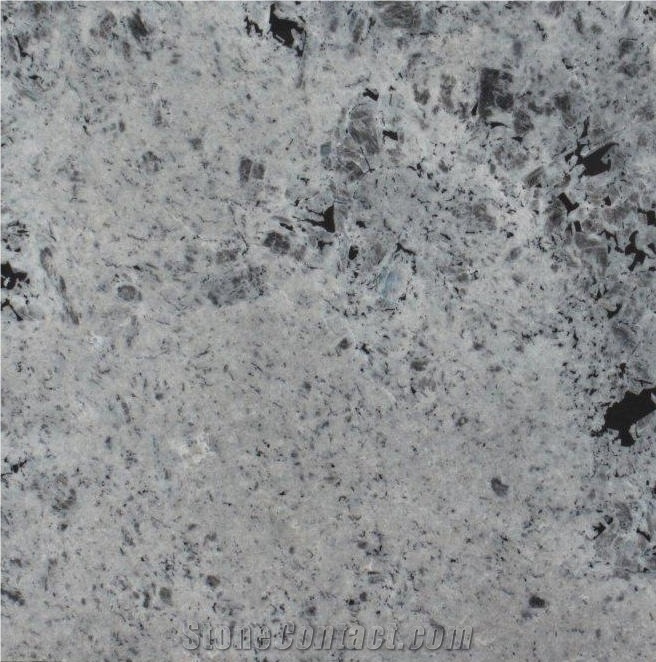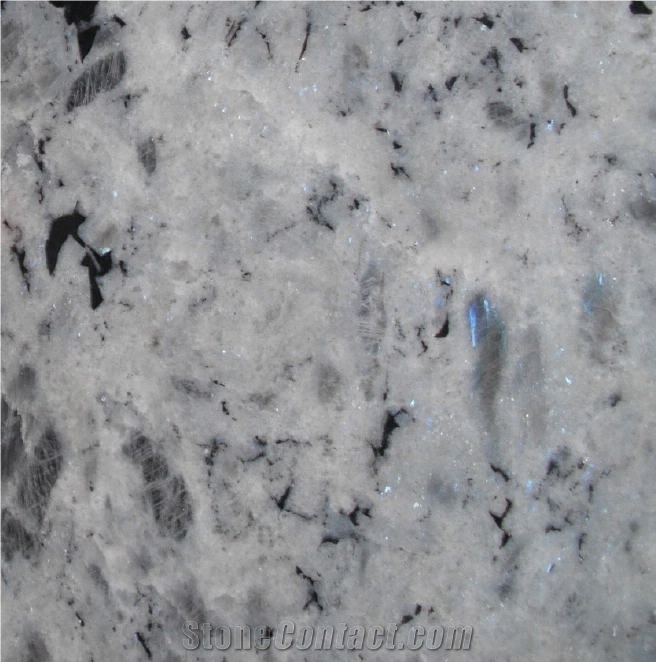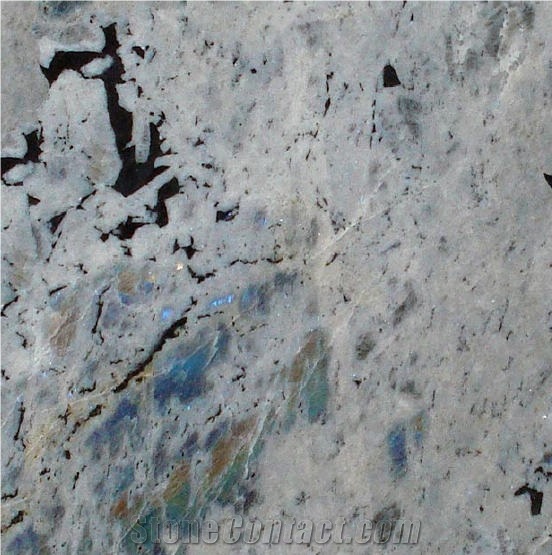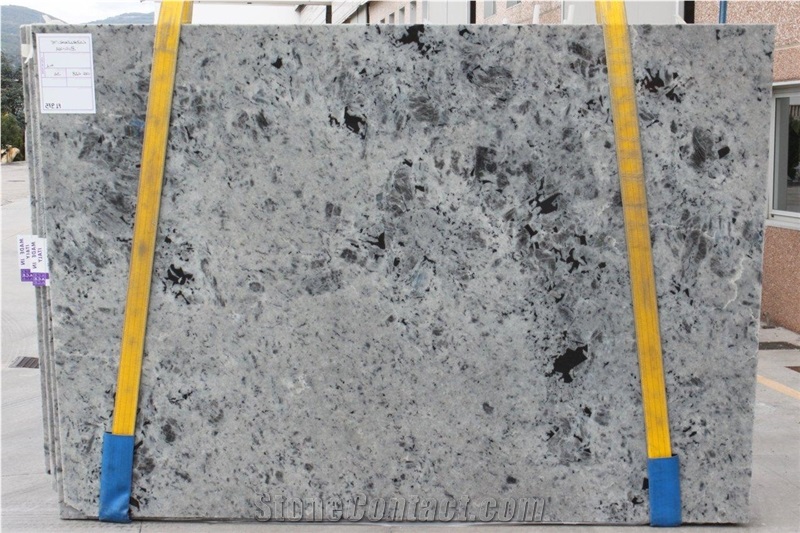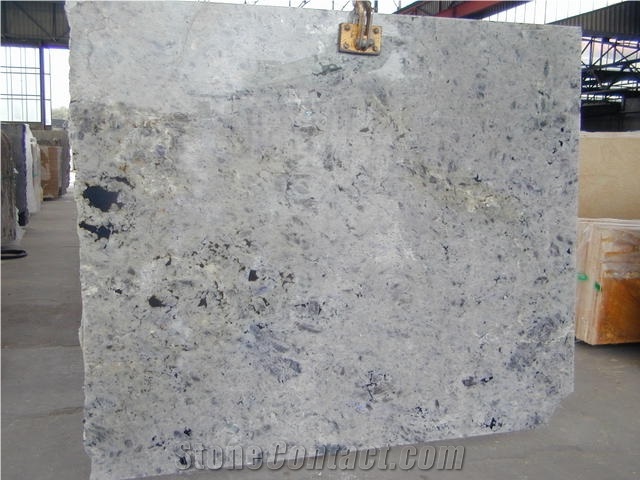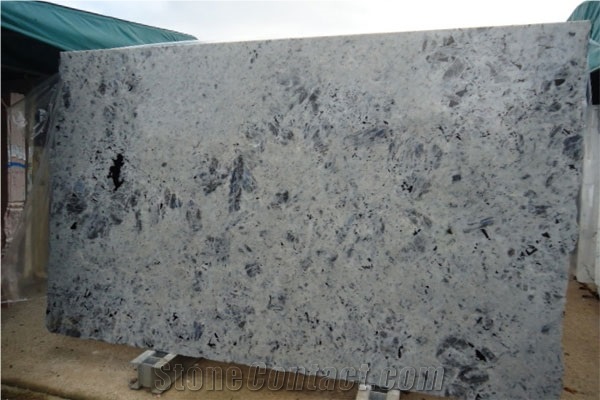Ice Pearl Granite
 Madagascar
(Ihosy, Ihorombe Region, central south Madagascar)
Madagascar
(Ihosy, Ihorombe Region, central south Madagascar)
Ice Pearl Granite, also known as Labradorite White Granite, is a mesmerizing natural stone quarried in Madagascar. This granite is renowned for its exquisite appearance, which combines light grey anorthosite with unique and captivating features that give it an otherworldly charm.
The dominant color of Ice Pearl Granite is a light, silvery grey, reminiscent of the cool, glimmering surface of ice. This color palette creates a sense of tranquility and elegance, making it a popular choice for a variety of design styles, from contemporary to minimalist.
What sets Ice Pearl Granite apart are the iridescent areas that scatter throughout the stone. These areas exhibit a stunning play of colors, often showcasing mesmerizing shades of blue, green, and sometimes even purple, like the shifting colors of a Labradorite gemstone. These iridescent areas bring a touch of magic and enchantment to the granite, adding to its visual appeal and making it a focal point in any space.
In addition to the iridescent areas, Ice Pearl Granite may also feature large black patches that create a striking contrast against the light grey background. These dark patches offer a dramatic flair to the stone, enhancing its overall uniqueness and character.
The polished finish of Ice Pearl Granite enhances the natural beauty of the stone, allowing the colors and iridescence to come to life. It reflects light, contributing to a sense of brightness and airiness in the space where it is used.
Ice Pearl Granite's durability and strength make it an excellent choice for various applications, including countertops, flooring, wall cladding, and even decorative accents. Its ability to withstand daily wear and tear ensures that it remains a long-lasting and cherished addition to any project.
As a product of Madagascar's natural geological formations, Ice Pearl Granite carries a sense of rare beauty and wonder, connecting modern spaces to the mysteries and natural wonders of the region. Its ethereal appearance and captivating iridescence make it a sought-after material for those seeking to infuse their spaces with a touch of elegance and awe-inspiring beauty.

Can Madagascar's Ice Pearl Granite be used in a living room?

Are there color variations of Madagascar's Ice Pearl Granite?

Is Madagascar's Ice Pearl Granite an expensive stone?

What should you not use for cleaning Ice Pearl Granite countertops?

Should kitchen backsplash be glossy or matt?

What grade is Madagascar's Ice Pearl Granite?

How thick is Madagascar's Ice Pearl Granite slabs?

Can Madagascar's Ice Pearl Granite be used indoors?

Can Madagascar's Ice Pearl Granite be used exterior applications in very sunny climates?

What is the difference between granite and labradorite?

What is the coefficient of friction of Water Jet Cut Madagascar's Ice Pearl Granite tiles?

Why is blue granite so expensive?

Can Madagascar's Ice Pearl Granite be used in landscaping?
-

Quanzhou First Impression Imp.&Exp. Trading Co.,Ltd.
 China
China
 Verified Supplier is for prove company authenticity,including business license,trade license and effective office space,to enhance buyers' trust to suppliers and their products, reducing communication costs.
Verified Supplier is for prove company authenticity,including business license,trade license and effective office space,to enhance buyers' trust to suppliers and their products, reducing communication costs.
Contact Supplier
-

Quanzhou First Impression Imp.&Exp. Trading Co.,Ltd.
 China
China
 Verified Supplier is for prove company authenticity,including business license,trade license and effective office space,to enhance buyers' trust to suppliers and their products, reducing communication costs.
Verified Supplier is for prove company authenticity,including business license,trade license and effective office space,to enhance buyers' trust to suppliers and their products, reducing communication costs.
Contact Supplier
-

 China
China
 15YRDiamond members are premium members on platform, providing members with comprehensive approach to promoting their products, increasing products exposure and investment return to maximize.
15YRDiamond members are premium members on platform, providing members with comprehensive approach to promoting their products, increasing products exposure and investment return to maximize.
 Verified Supplier is for prove company authenticity,including business license,trade license and effective office space,to enhance buyers' trust to suppliers and their products, reducing communication costs.
Verified Supplier is for prove company authenticity,including business license,trade license and effective office space,to enhance buyers' trust to suppliers and their products, reducing communication costs.
Contact Supplier
-

 India
India
Contact Supplier
-

 China
China
 5YRDiamond members are premium members on platform, providing members with comprehensive approach to promoting their products, increasing products exposure and investment return to maximize.
5YRDiamond members are premium members on platform, providing members with comprehensive approach to promoting their products, increasing products exposure and investment return to maximize.
 Verified Supplier is for prove company authenticity,including business license,trade license and effective office space,to enhance buyers' trust to suppliers and their products, reducing communication costs.
Verified Supplier is for prove company authenticity,including business license,trade license and effective office space,to enhance buyers' trust to suppliers and their products, reducing communication costs.
Contact Supplier
-

 China
China
 5YRDiamond members are premium members on platform, providing members with comprehensive approach to promoting their products, increasing products exposure and investment return to maximize.
5YRDiamond members are premium members on platform, providing members with comprehensive approach to promoting their products, increasing products exposure and investment return to maximize.
 Verified Supplier is for prove company authenticity,including business license,trade license and effective office space,to enhance buyers' trust to suppliers and their products, reducing communication costs.
Verified Supplier is for prove company authenticity,including business license,trade license and effective office space,to enhance buyers' trust to suppliers and their products, reducing communication costs.
Contact Supplier
-

-

 China
China
 Verified Supplier is for prove company authenticity,including business license,trade license and effective office space,to enhance buyers' trust to suppliers and their products, reducing communication costs.
Verified Supplier is for prove company authenticity,including business license,trade license and effective office space,to enhance buyers' trust to suppliers and their products, reducing communication costs.
Contact Supplier
-

Xiamen Panel Import & Export Co., Ltd.
 China
China
 Verified Supplier is for prove company authenticity,including business license,trade license and effective office space,to enhance buyers' trust to suppliers and their products, reducing communication costs.
Verified Supplier is for prove company authenticity,including business license,trade license and effective office space,to enhance buyers' trust to suppliers and their products, reducing communication costs.
Contact Supplier
-

The request includes: 1. surface finished, size 2. quantity required






